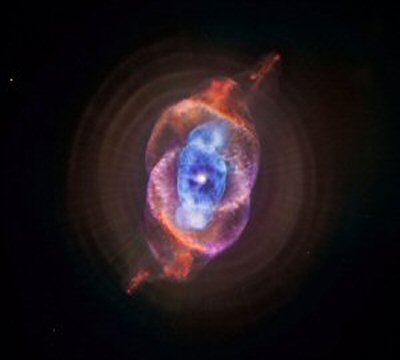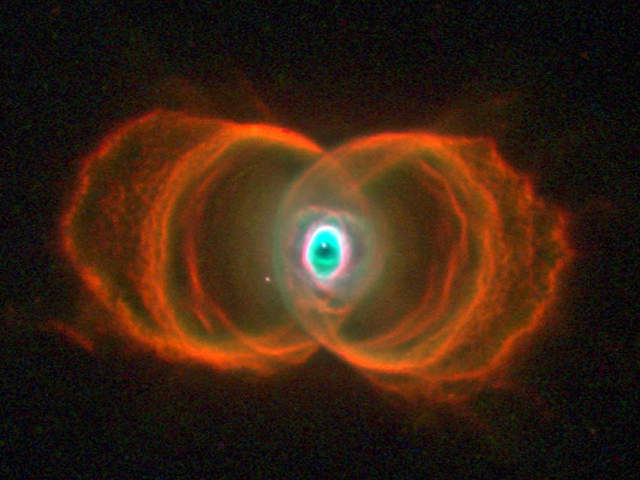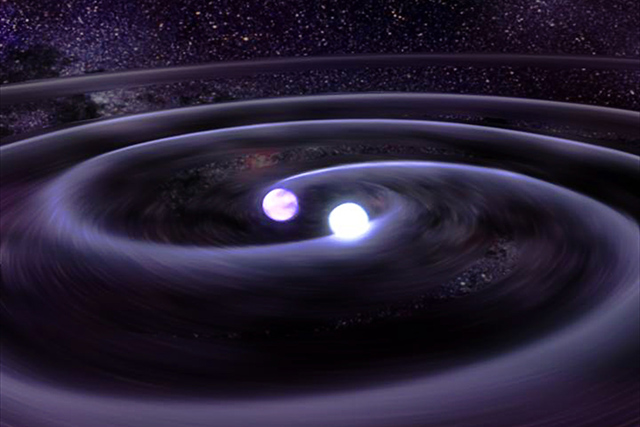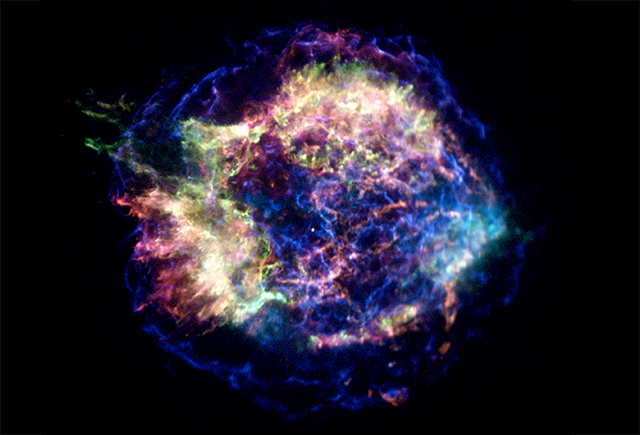
04 Apr Planetary Nebula
Learning about planetary nebulae

Galactic phenomena’s that make the rainbow seem like yesterday’s news are a mystery to the optical eye. There are many sites on the wide world web that have an influx of beautiful images no one has ever seen on a beautiful starry night. However, SALT astronomer Brent Miszalski and his colleagues have been studying the formation of such beauties.
The Planetary Nebulae, often shortened as PNe, are formed when a low mass star reaches the end of its life and transforms into a red giant star whose outer layers are expelled. Left behind in the ashes is the hot core of the star, now called a white dwarf, that makes the surrounding gas glow like a neon sign. The white dwarf allows us to see the fascinating shapes and colours of PNe that last only a short time. When viewed by early telescopes their appearance was similar to Neptune and Uranus, explaining the moniker of ‘planetary’ nebulae.

White dwarf photographic impression by Nasa. Image credit: Tod Strohmayer (GSFC) and Dana Berry (Chandra X-Ray Observatory)
Therefore, the faint stars we identify as the central stars of PNe are white dwarfs near the last moments of a star’s life. Because the formation of many PNe cannot be explained without taking into consideration the presence of a binary star system, responsible for shaping the diverse and peculiar shapes seen in PNe, such a binary may also help explain even bigger phenomena such as the Supernova.
Type 1a Supernovae generally originate from white dwarf stars in a binary system. This binary star system is the same one that characterises a planetary nebula and because of this, the binary system remains as a white dwarf star which collects matter from a nearby neighbour until it finally ignites a nuclear explosion which can end the earth.
“Nature” has an excellent paper for those interested in more information.
There are two channels for forming SN 1a (both equally uncertain/debated in the literature): double degenerate (DD) which involves two white dwarfs merging together (total mass of system must be > 1.4 times mass of Sun) and then exploding; and the single degenerate (SD) which involves a white dwarf with a red giant or other companion donating mass to the white dwarf that over time pushes the white dwarf mass above 1.4 times mass of Sun, forcing the white dwarf to explode.

This Chandra X-ray photograph shows Cassiopeia A (Cas A, for short), the youngest supernova remnant in the Milky Way. Credit: NASA/CXC/MIT/UMass Amherst/M.D.Stage et al.
According to Dr Miszalski, “SALT has been useful in helping us study the binary systems that create Planetary Nebulae”. Through observing the properties of red giants, astronomers are able to establish the components which result in the formation of nebulae, and on a greater scale, the hypothesized formation of the Supernova.

